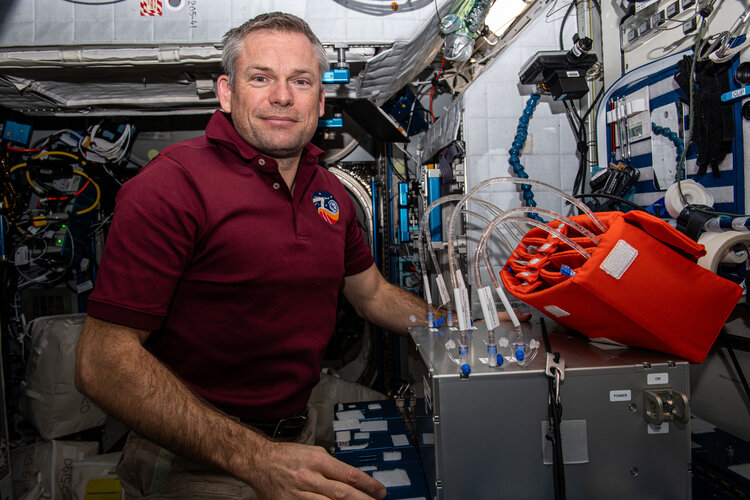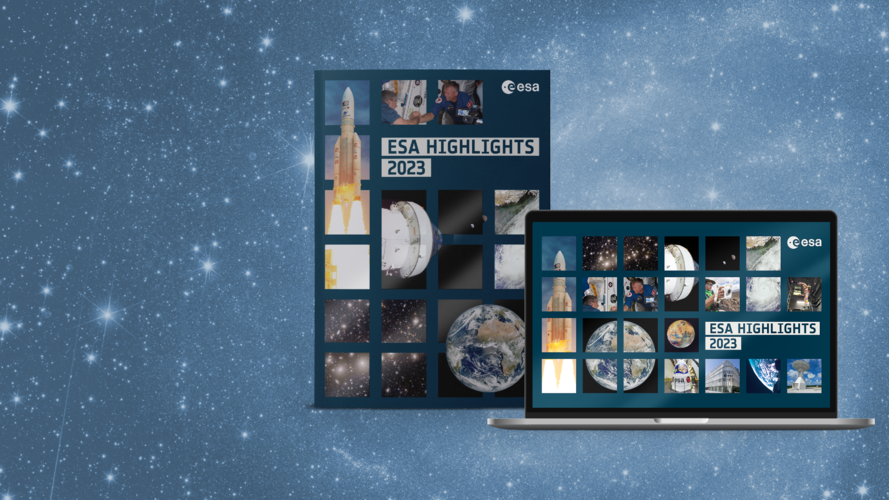NASA Sensor Produces First Global Maps of Surface Minerals in Arid Regions
Wednesday, 13 December 2023 10:30 NASA's EMIT mission has created the first comprehensive maps of the world's mineral dust-source regions, providing precise locations of 10 key minerals based on how they reflect and absorb light. When winds loft these substances into the air, they either cool or warm the atmosphere and Earth's surface, depending on their composition. Understanding their abundance around the globe will help resea
NASA's EMIT mission has created the first comprehensive maps of the world's mineral dust-source regions, providing precise locations of 10 key minerals based on how they reflect and absorb light. When winds loft these substances into the air, they either cool or warm the atmosphere and Earth's surface, depending on their composition. Understanding their abundance around the globe will help resea Particle physicists put forward research priorities for coming decade
Wednesday, 13 December 2023 10:30 A panel of the nation's top particle physicists, chaired by University of California, Berkeley, theoretician Hitoshi Murayama, has issued its final report recommending how the U.S. government should commit its high-energy physics research funds for the next decade and beyond, focusing on neutrinos, dark matter and the cosmic microwave background.
The report by the Particle Physics Project
A panel of the nation's top particle physicists, chaired by University of California, Berkeley, theoretician Hitoshi Murayama, has issued its final report recommending how the U.S. government should commit its high-energy physics research funds for the next decade and beyond, focusing on neutrinos, dark matter and the cosmic microwave background.
The report by the Particle Physics Project Design the patch for Hera’s Milani CubeSat
Wednesday, 13 December 2023 09:47
Milani needs you! This is your chance to design a mission patch for the Milani CubeSat which will fly with ESA's Hera planetary defence spacecraft to the Didymos binary asteroid system.
A mission for the Rosalind Franklin rover
Wednesday, 13 December 2023 09:45 Video:
00:01:25
Video:
00:01:25
Trailer of the ExoMars Rosalind Franklin mission.
In 2028, ESA will launch its most ambitious exploration mission to search for past and present signs of life on Mars.
Enjoy the ExoMars Rosalind Franklin mission in minute detail – everything down to the colour and size of the wires, sticky tape and scratches. The spacecraft, the rover and martian landscapes are as true to reality as possible for a simulation. The visuals show the spacecraft structural engineering with a faithful robotic appearance. The martian landscape has been simulated with meticulous realism.
The story begins with the rover exploring the surface of
HyImpulse hybrid rocket motor test
Wednesday, 13 December 2023 09:27 Video:
00:00:28
Video:
00:00:28
Testing the 75kN hybrid rocket motor made by HyImpulse at German Aerospace Center, DLR’s Lampoldshausen facility in Germany, based on a low-cost hybrid propulsion technology. The rocket motor uses "space-grade candle wax" and liquid oxygen as propellants.
HyImpulse Technologies, based in Neuenstadt am Kocher in Southern Germany is developing a three-stage small launcher. Their three-stage launch vehicle, called SL1, will also be powered by green hybrid propulsion technology, using liquid oxygen and paraffin as propellants. The lightweight rocket is designed to launch small satellites up to 500 kg out to low-Earth orbit.
HyImpulse technologies was one of the first
Clean water for space and Earth
Wednesday, 13 December 2023 08:00
Access to clean water is essential for humans. ESA astronaut Andreas Mogensen is helping to understand how to do it efficiently and at larger scales by testing water filtration membranes on the International Space Station as part of his Huginn mission.
ESA Highlights: the best of ESA in 2023
Wednesday, 13 December 2023 07:00
ESA Highlights: the best of ESA in 2023
ESA Highlights is a visual showcase of some of ESA’s key achievements over a 12-month period.
Engineers Working to Resolve Issue With Voyager 1 Computer
Wednesday, 13 December 2023 06:36 Engineers are working to resolve an issue with one of Voyager 1's three onboard computers, called the flight data system (FDS). The spacecraft is receiving and executing commands sent from Earth; however, the FDS is not communicating properly with one of the probe's subsystems, called the telecommunications unit (TMU). As a result, no science or engineering data is being sent back to Earth.
Engineers are working to resolve an issue with one of Voyager 1's three onboard computers, called the flight data system (FDS). The spacecraft is receiving and executing commands sent from Earth; however, the FDS is not communicating properly with one of the probe's subsystems, called the telecommunications unit (TMU). As a result, no science or engineering data is being sent back to Earth. NASA's Commercial Partners Continue Progress on New Space Stations
Wednesday, 13 December 2023 06:36 Three NASA-funded commercial space station partners are on track for the design and development of their orbital destinations and the transition of agency's low Earth orbit needs from the International Space Station.
"We are ending the year on a high note with multiple important milestones being completed by our partners," said Angela Hart, manager of the Commercial Low Earth Orbit Develop
Three NASA-funded commercial space station partners are on track for the design and development of their orbital destinations and the transition of agency's low Earth orbit needs from the International Space Station.
"We are ending the year on a high note with multiple important milestones being completed by our partners," said Angela Hart, manager of the Commercial Low Earth Orbit Develop France 2030 boosts HyPrSpace and Partners with 35M Euro for Micro-Launcher Development
Wednesday, 13 December 2023 06:36 HyPrSpace, in collaboration with Telespazio France and CT Ingenierie, has recently secured a significant funding boost of euro 35 million for the Agile Space Access Development Project #1 (PADA1). This project, part of the France 2030 initiative, focuses on the development of innovative space access solutions, marking a significant step in the nation's space industry.
The PADA1 consortium,
HyPrSpace, in collaboration with Telespazio France and CT Ingenierie, has recently secured a significant funding boost of euro 35 million for the Agile Space Access Development Project #1 (PADA1). This project, part of the France 2030 initiative, focuses on the development of innovative space access solutions, marking a significant step in the nation's space industry.
The PADA1 consortium, A Rinse and Repeat Kind of Plan: Sols 4035-4036
Wednesday, 13 December 2023 06:36 Earth planning date: Monday, December 11, 2023: Today's 2-sol plan was a "Touch and Go" plan, where we do some short science activities (ChemCam and/or MAHLI and APXS) in our workspace early in the morning and then drive to a new workspace. Unfortunately, due to a minor issue with the arm, the weekend plan only partially executed. As Susane reported on Friday, we had planned to DRT the dark tone
Earth planning date: Monday, December 11, 2023: Today's 2-sol plan was a "Touch and Go" plan, where we do some short science activities (ChemCam and/or MAHLI and APXS) in our workspace early in the morning and then drive to a new workspace. Unfortunately, due to a minor issue with the arm, the weekend plan only partially executed. As Susane reported on Friday, we had planned to DRT the dark tone NASA's Perseverance Rover Deciphers Ancient History of Martian Lake
Wednesday, 13 December 2023 06:36 Now at 1,000 days on Mars, the mission has traversed an ancient river and lake system, collecting valuable samples along the way.
Marking its 1,000th Martian day on the Red Planet, NASA's Perseverance rover recently completed its exploration of the ancient river delta that holds evidence of a lake that filled Jezero Crater billions of years ago. The six-wheeled scientist has to date collec
Now at 1,000 days on Mars, the mission has traversed an ancient river and lake system, collecting valuable samples along the way.
Marking its 1,000th Martian day on the Red Planet, NASA's Perseverance rover recently completed its exploration of the ancient river delta that holds evidence of a lake that filled Jezero Crater billions of years ago. The six-wheeled scientist has to date collec Unlocking Lunar Mysteries: Chang'e-5 Mission Sheds Light on Moon's Surface Weathering
Wednesday, 13 December 2023 06:36 In a groundbreaking development, scientists from the China University of Geosciences, Wuhan, in collaboration with researchers from Brown University and the University of Hawaii, have successfully measured the maturity index of lunar soil brought back by China's Chang'e-5 mission. This achievement marks a significant milestone in lunar research, shedding light on the space weathering processes o
In a groundbreaking development, scientists from the China University of Geosciences, Wuhan, in collaboration with researchers from Brown University and the University of Hawaii, have successfully measured the maturity index of lunar soil brought back by China's Chang'e-5 mission. This achievement marks a significant milestone in lunar research, shedding light on the space weathering processes o Seeing and Believing: 15 Years of Exoplanet Images
Wednesday, 13 December 2023 06:36 First there was a gloriously dusty disk. Then the traceable tracks of "exocomets." But 15 years ago this fall, the star system Beta Pictoris yielded one of the most iconic pictures in astrophysics: a direct image of a planet orbiting another star.
The young, bright star, some 63 light-years distant and visible to the naked eye, all but overwhelmed the faint light of the planet. When astron
First there was a gloriously dusty disk. Then the traceable tracks of "exocomets." But 15 years ago this fall, the star system Beta Pictoris yielded one of the most iconic pictures in astrophysics: a direct image of a planet orbiting another star.
The young, bright star, some 63 light-years distant and visible to the naked eye, all but overwhelmed the faint light of the planet. When astron 14-inch spacecraft delivers new details about 'hot Jupiters'
Wednesday, 13 December 2023 06:36 A spacecraft the size of a cereal box has collected precise measurements of the atmospheres of large and puffy planets called "hot Jupiters." The findings, led by a team from the University of Colorado Boulder, could help reveal how the atmospheres around these and a host of other worlds are escaping into space.
The observations are the first results to come from a hard-working NASA spacec
A spacecraft the size of a cereal box has collected precise measurements of the atmospheres of large and puffy planets called "hot Jupiters." The findings, led by a team from the University of Colorado Boulder, could help reveal how the atmospheres around these and a host of other worlds are escaping into space.
The observations are the first results to come from a hard-working NASA spacec 
